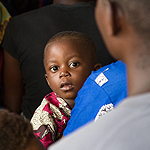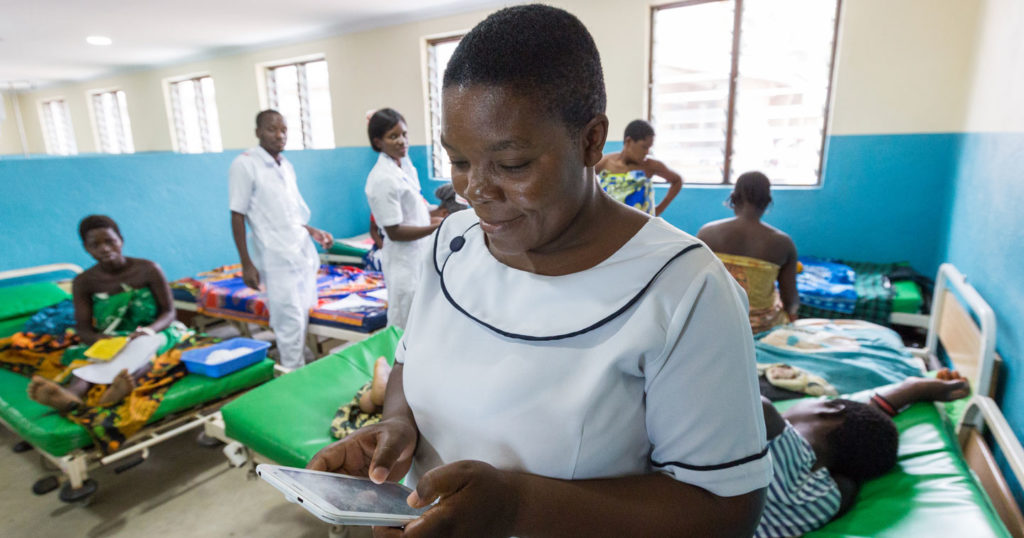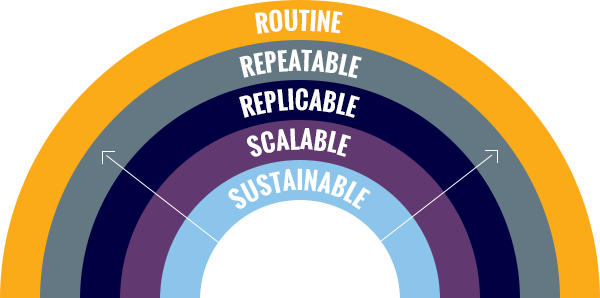Have you ever wondered…
where to find people who need vaccinations?

where to
locate a
school?

where to
deliver food
supplies?

We set out to find data sources that could safely and reliably deliver answers to those questions.

Data for
development
Every day, vital services are provided to people that enrich their lives. From the delivery of health care to educational services to emergency response, local and national governments make choices about where to provide these services, often with little to no real-time data.
Using our “Think, Do, Replicate” approach, we set out in 2017 to understand how we could fill this data gap (Think). We wanted to safely, securely, and routinely access the rich data resource that sits in your pocket—your mobile phone—to deliver services to the most vulnerable (Do). And now we want to share our lessons learned so others can access this vital resource (Replicate).
OUR TIMELINE
- BY 2016
We saw that more than 200 data pilots had been run, but none had scaled. Learning from what others had tried, we worked with our global partners (e.g., Global Pulse, GSMA) to figure out how the use of MNO data could be replicated at scale. - 2017
Think: We started with privacy by design, identified the technology needs, and researched sustainable business models.And it’s still ongoing - 2018
Do: We developed partnerships with countries, started investing in platforms, and together began country-level efforts to test different approaches. We began to see results.And it’s still ongoing - 2021
Replicate: We wanted to figure out how someone could take this knowledge and reproduce it in their own environment.And it’s still ongoing
ABOUT THE EFFORT
Employing a “Think, Do, Replicate” model, we undertook a five-year effort to understand how to safely, reliably, and replicably use mobile network operator (MNO) data to support national-level decision-making.
What will success look like?
Success is when essential services can be delivered efficiently and effectively to those who need them most.
This is possible when governments, NGOs, MNOs, and analytical partners can combine multiple data sources to direct decision-making. We want to make this new set of privacy-protected data analytics available to national decision-makers.
To do that, they must become:

ABOUT THIS WEBSITE
This site describes what our team and our partners have learned about putting in place the right policies, pricing models, technical platforms, and partnerships to make the vision of useful, nearly real-time data a resource that country leaders can use while protecting the rights of citizens.
By testing our hypothesis, we found that anonymized and aggregated call detail record (CDR) data analytics can be a useful stand-in for population density at a highly local level and, therefore, can well-inform health, educational, agricultural, and disaster response efforts. For example, we were able to demonstrate how MNO data is a reasonable proxy for population movement during the dry and rainy seasons—critical input for government agencies looking to locate public services such as health care facilities.


We invite you to join us and our partners to learn more about the research, country examples, and replication efforts underway. Our hope is that by sharing our findings using our “Think, Do, Replicate” model, we can help national statistics offices, local NGOs, and MNOs mirror these programs in other countries or wherever they work.
OUR PARTNERSHIPS
This effort would not have been possible without the generous support of our donors—the Bill & Melinda Gates Foundation, Foreign and Commonwealth Development Office (FCDO), U.S. Agency for International Development (USAID), Swedish International Development Agency (Sida), and the United Nations Foundation—and the implementing agencies and technology providers that worked alongside us.

At the global level, we worked closely with groups including GSMA, UN Global Pulse, and the Data-Pop Alliance. We agreed from the outset to conduct separate research and try different approaches, but then unite to measure our successes and spread the word about how to replicate possible models.
Partners in each country were also critical contributors. National governments provided regulatory oversight, guided us with questions, and worked to institutionalize these practices. Implementing NGOs such as Cooper/Smith and PATH provided sector-specific expertise. Together, we were guided by burning questions that governments had struggled to tackle. This ensured that our work was not just a technical novelty, but rather designed to solve real-world problems faced by governments and citizens.
We also deeply thank our technical partners, the MNOs that agreed to work with us on finding a safe way to extract data analytics; the systems integrators, including Infosys; and platform providers such as Dalberg Data Insights and Flowminder.
By uniting these actors while testing new practices with governments and local partners, we believe we have found replicable methods that others can work with to implement new models in other countries.
Images at top: (left) © Digital Impact Alliance (DIAL); (middle) © Oleksandr/stock.adobe.com; (right) © Stephen/stock.adobe.com